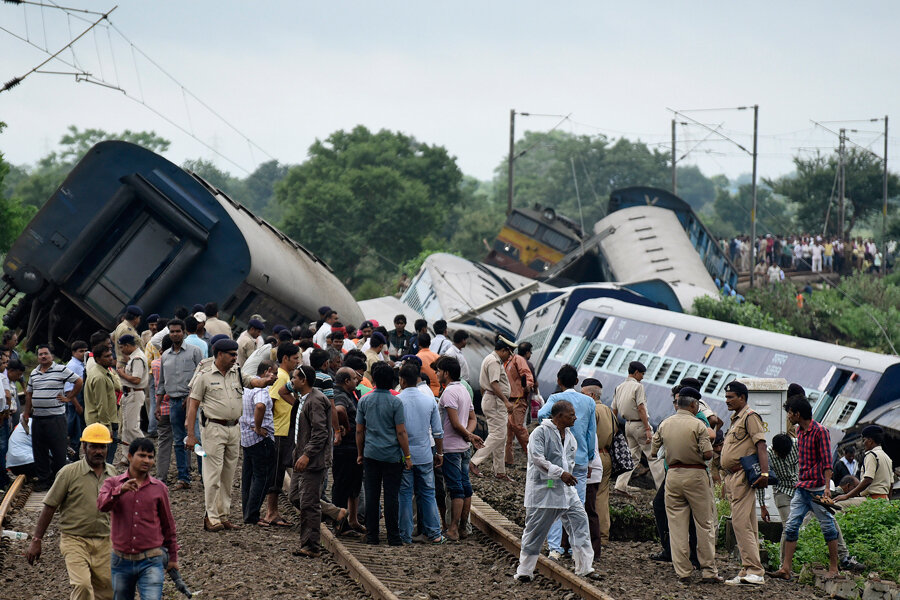Dozens killed in India train derailments: How safe are India's trains?
Loading...
Two express trains carrying more than a thousand people flew off a bridge and into a river in central India late on Wednesday, leaving 27 people dead and dozens more injured, according to local authorities.
Railway officials in the Madhya Pradesh state told CNN that the trains had been traveling only minutes apart when both partly derailed.
Eighteen compartments were plunged into the water from both trains, reported Reuters.
The two express trains had been carrying up to 1,600 people collectively, at least some of whom were local residents.
Rescue teams helped about 300 people to safety. Divers used gas cutters to pull out passengers who were trapped, and workers rushed the injured to hospital.
Officials say the accident was the result of a flash flood, describing how within the span of 10 minutes, the water level had risen so high that it caused a portion of the track to sink.
Heavy monsoons have barreled through the region in the past week, killing hundreds in India, Pakistan, and Myanmar in flash floods and landslides, according to The Times of India. A cyclone last week also left more than 100 in western and eastern India dead, as well as tens of thousands evacuated, reported Channel News Asia.
Though the rain began to taper off on Wednesday, authorities told The Associated Press that rescue teams were slowed by darkness and mud.
The accident had occurred just before midnight. As workers looked around, broken train tracks lay scattered and at least two coaches were spotted partially submerged in mud, railway official Anil Saksena told the AP.
India’s government has announced compensation packages for the injured and families of those killed. But critics say the accident marks more casualties in a broader network of neglect, and should be blamed on poor maintenance.
“It's totally unacceptable,” Dinesh Trivedi, a former railway minister, told Reuters. India's Prime Minister, Narendra Modi, also weighed in on Twitter:
In another tweet offering further condolences, Mr. Modi wrote that "the situation is being monitored very closely."
The accident, now the fifth to occur in India this year, has triggered attention back to a lack of safety on the country’s railroads. India has the world’s fourth-largest rail network, transporting more than 23 million passengers a day.
“However, many parts of the vast network are poorly maintained and accidents are common,” reported the AP.
One accident in March killed more than 30 people and injured at least 50 when “a passenger train overshot a stop and jumped its tracks,” reported CNN.






